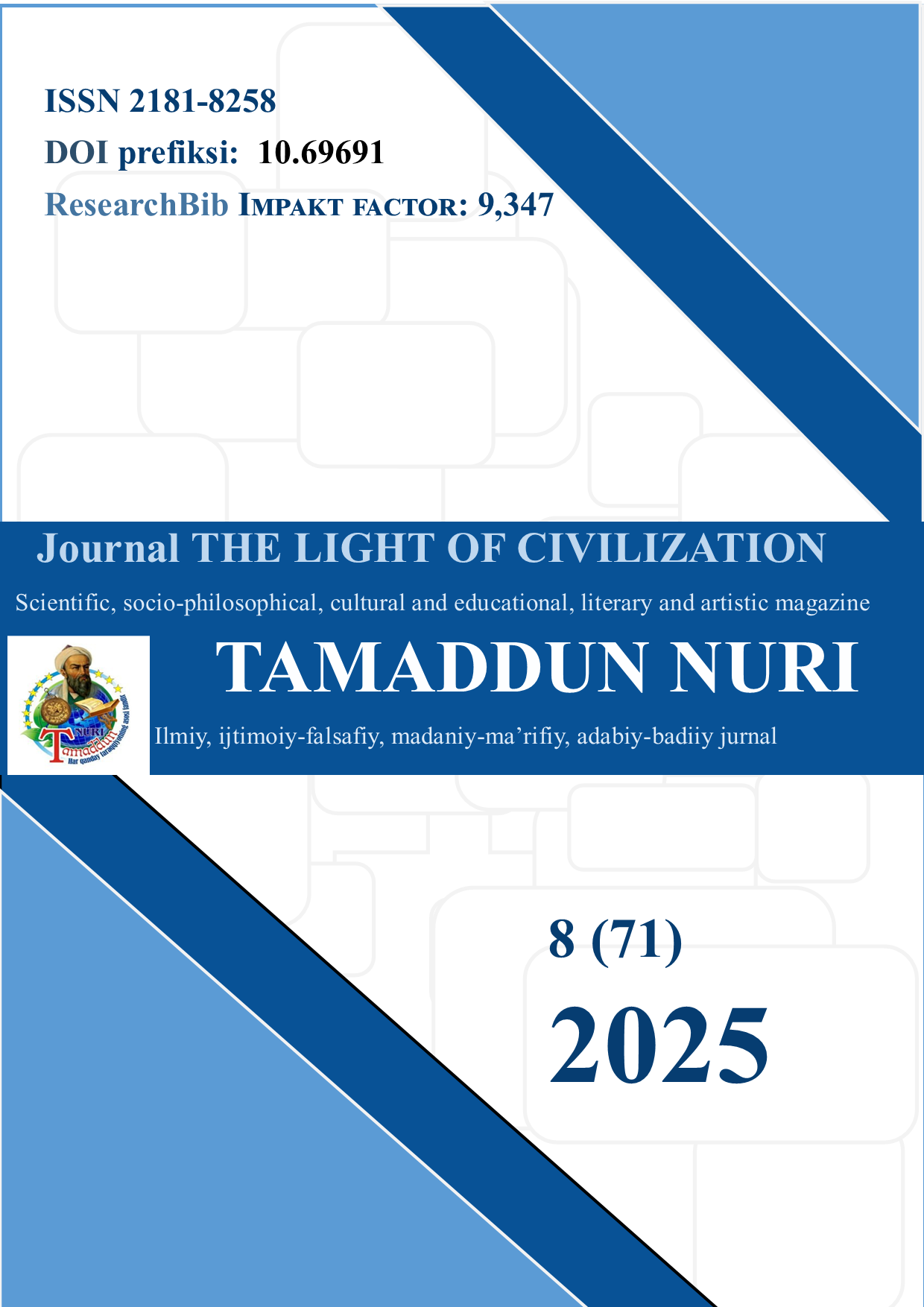PRAGMATIC FEATURES OF NEOLOGISMS IN ENGLISH AND UZBEK
DOI:
https://doi.org/10.69691/frgjcy51Keywords:
neologism, English language, Uzbek language, pragmatic features, word formation, borrowed words, communicative function, cultural adaptation.Abstract
This article analyzes the pragmatic features of neologisms in the English and Uzbek languages, focusing on their role in communication, cultural reflection, and the significance in language development. The study also examines the impact of mass media, the internet, and social networks on the spread of neologisms, revealing similarities and differences between the two languages. Additionally, pandemic-era neologisms are considered as examples, highlighting their role in social processes. Furthermore, the specific features of neologisms in official speech, everyday communication, and youth language are analyzed, along with their influence on intergroup communication.
References
Allan, K., Burridge, K. Forbidden Words: Taboo and the Censoring of Language. Cambridge University Press, 2006.
Arnold I.V. Stylistics of modern English (stylistics of decoding) / Study Guide. " Foreign. yaz. ". 3rd ed. M.: Education, 2017. https://7universum.com/ru/philology/archive/item/14718
Akhrenova N.A. Internet discourse as a global intercultural phenomenon and its linguistic design: M., 2019. - https://cyberleninka.ru/article/n/linguistic-features-of-neologisms-in-the-internet-discourse
Avlaeva Saida Bozorovna, Pragmatic Feature of Neologisms in Uzbek and English Languages, 176-179. https://grnjournal.us/index.php/STEM/article/download/7424/7220/13103
Bauer, L. Introducing Linguistic Morphology. Edinburgh University Press, 2003.
Crystal, D. English as a Global Language. Cambridge University Press, 2012.
Jo‘rayev, M. “O‘zbek tilida zamonaviy neologizmlar va ularning qo‘llanish xususiyatlari.” O‘zbek tili va adabiyoti, №5, 2020.
Plag, I. Word-Formation in English. Cambridge University Press, 2003.
Yule, G. Pragmatics. Oxford University Press, 1996.
Downloads
Published
Issue
Section
License
Copyright (c) 2025 Journal of Tamaddun Nuri

This work is licensed under a Creative Commons Attribution-NoDerivatives 4.0 International License.



